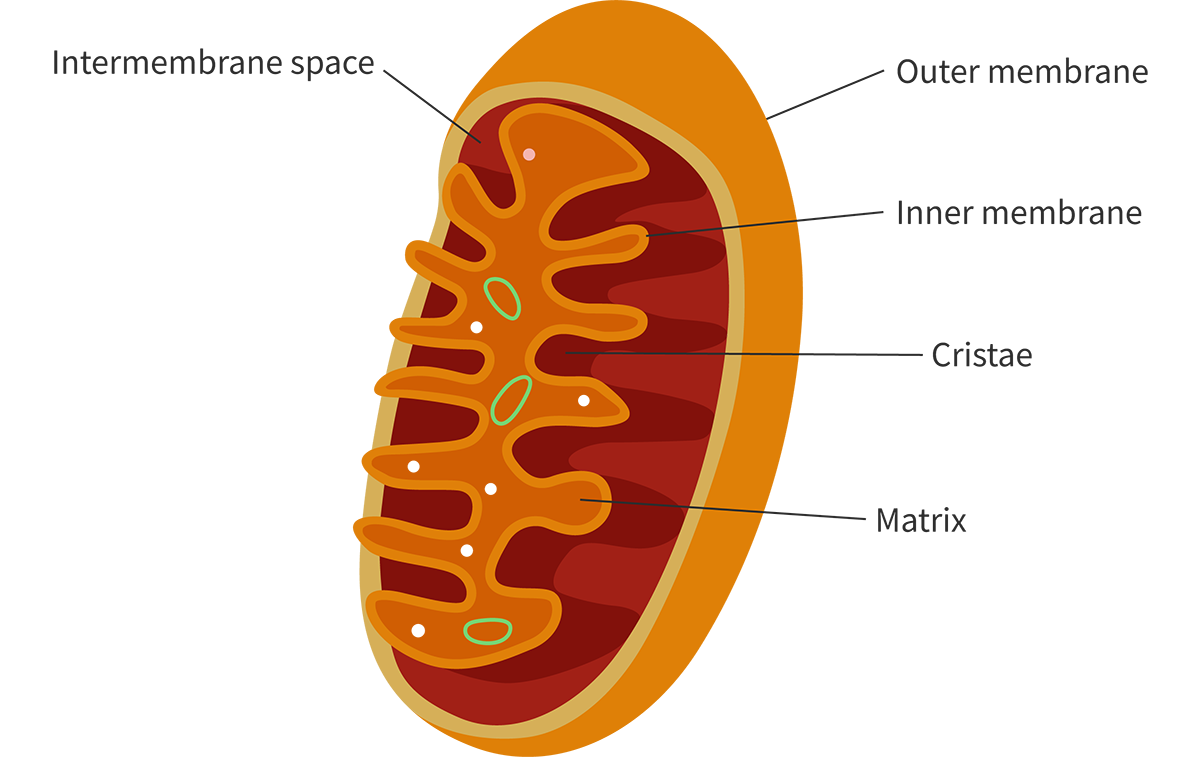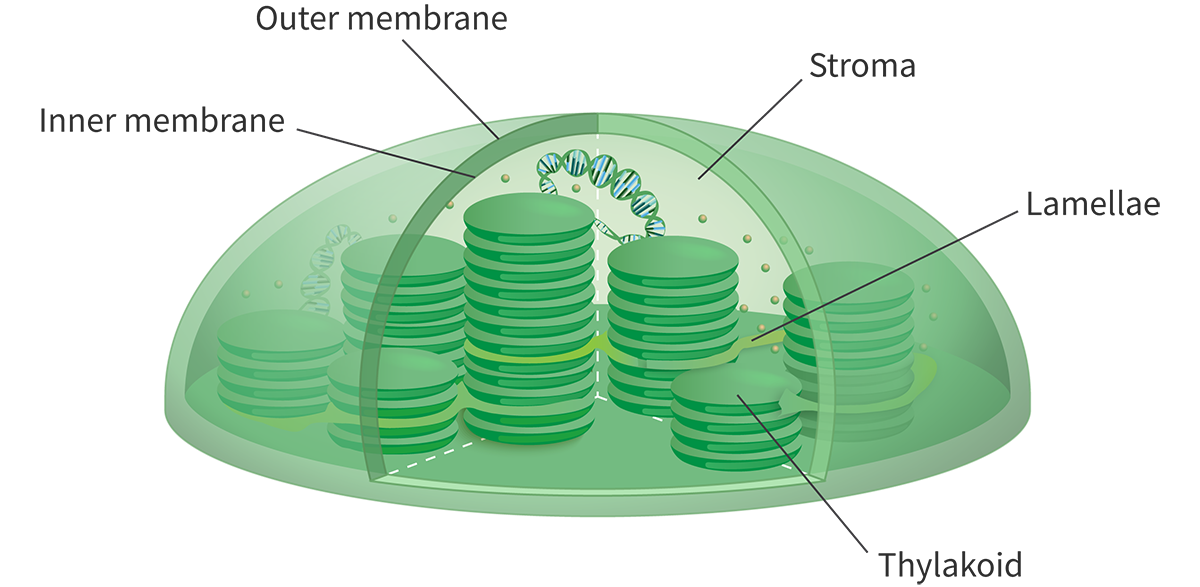B2.2 : Organelles and Compartmentalisation
1/42
There's no tags or description
Looks like no tags are added yet.
Name | Mastery | Learn | Test | Matching | Spaced |
|---|
No study sessions yet.
43 Terms
organelle
a discrete structure in a cell that is adapted to perform a specific function
advantages of compartmentalisation list
localised conditions
concentration of enzymes/ substrates are adapted
isolation of substances can prevent damage
adaptation of numbers and locations od organelles
surface area
advantages of compartmentalisation localised conditions
Conditions such as pH can be maintained at an ideal level for a particular process, which may be different from the levels needed for other processes inside the cell
advantages of compartmentalisation concentration of enzymes
Enzymes and substrates for a particular process can be much more concentrated than if they were spread throughout the cytoplasm. This increases the chance for collision between active site and substrate and thus increases the rate of reaction
advantages of compartmentalisation isolation of substances
Substances that could cause damage to the cell can be kept inside the membrane of an organelle e.g. digestive enzymes of a lysosome could digest and kill the cell, if they were not safely stored inside a lysosome membrane protecting remaining structures from degradation.

adaptation regarding location and numbers of organelles
Organelles with their content can be moved around within a cell and specific organelles can be increased in number depending on the cell’s needs without the whole cell having to divide.

surface area
There is a larger area of membranes available for processes that happen within or across membranes. Large areas of membrane can become dense with proteins for a specific process
structure inside cells that aren’t organelles
the cytoskeleton: network of proteins which allow for the cell to have a distinct shape and be able to move. Not organelles bc not enclosed by membrane nor involved in metabolic processes
cell wall protects against mechanical stresses but is outside cell and not involved in metabolic processes
the cytoplasm is necesary to the function of the cell, but it isn’t a discrete part of it
advantages of compartmentalisation lysosomes
lysosomes are membrane bound organelles which contain enzymes which digest and recycle waste materials inside of the cell. the optimum ph for these enzymes is very low, so the lysosomes are filled with hydrochloric acid.
These enzymes and this PH could potentially be very harmful to other organelles, so compartmentalisation here is key
in such a small area the enzymes are more concentrated, so the process is more efficient
advantages of compartmentalisation macrophages
Macrophages use phagocytic vacuoles full of digestive enzymes to break down pathogens and thus create an immune response.
These enzymes and this PH could potentially be very harmful to other organelles, so compartmentalisation here is key
advantages of compartmentalisation of nucleus
post transcriptional modification can occur as there is a separation between the transcription and translation step
this isnt possible in prokaryotic organisms as they lack a nucleus and thus these two processes aren’t separated
physical protection of DNA as it is very sensitive to environmental changes
“to prevent protein synthesis before post transcriptional modification of mRNA”
how are nuclei reformed during mitosis
membrane bound vesicles which contain protein and lipids specific for the nuclear membrane from the ER bind to individual chromosomes
eventually, the vesicles fuse together together to form the double membrane of the nucleus with the chromosomes inside
potential disadvantages of cell compartementalisation
slowed down response to environment
structure of mitochondrion + parts

Cristae
folds in inner membrane of mitochondria, outside of inner membrane. increases surface area, allowing for more space for the enzymes needed for ATP production
inner membrane
folded to increase surface area
outer membrane of mitochondria features
is semi permeable
has many porins which allow ion and other larger molecules to enter
mitochondria’s matrix
fold inside inner membrane. contains many enzymes and molecules in high concentration needed in Krebs cycle
intermembrane space inside of mitochondria
rather small, so has a high concentration of molecules. a concentration gradient is formed, and that is used to generate ATP
structure of chloroplasts

outer membrane of chloroplasts
permeable to small molecules
inner membrane of chloroplasts
less permeable
most transport requires transport proteins
stoma what is it + purpose
inside of the chloroplast but not in thyakoid
has all enzymes required for the Calvin cycle, is where it takes place
efficiency is maximised because all required molecules are in stoma and thus have a high concentration
thyakoids how is it’s structure good for it’s purpose ?
this compartmentalisation is good as certain molecules inside of it might be harmfull to other parts of the cell
it’s disk like structure maximises surface area and increases the amount of chlorophyll inside on the membrane
where light dependent reactions of photosynthesis take place
stack of thylakoids
granums: maximises amount of light absorbed
what holds granums together ?
Lamellae
what side of the RER are bound ribosomes bound to ?
to the cytosolic side
for what purpose do bound ribosomes produce proteins ?
for extracellular uses
what is the specisitivity of mRNA codes which go to the ER ?
they have an ER signal sequence. This tells the ribosome they are bound to to go to the Rough endoplamic
what is the inside of the endoplasmic reticulum called ?
the ER lumen
what occurs inside the of RER
it has enzymes to modify the cells
eg. adding carbohydrates (glycoproteins , adding phosphate groups, assisting in folding…
after they are transported by vesicles
how are proteins transportes by vesicles to the golgi apparatus
a piece of the RER membrane breaks of with the protein inside
that piece becomes the vesicle
instead of leaving the cell as would happen in exocytosis, the vesicle travels to the golgi apparatus
parts of the golgi apparatus
cis compartments
median compartments
trans compartments
cis compartment of the RER
first step
vesicle fuses with the cis membrane and releases proteins inside golgi apparatus
what proteins are sent to the median part of the golgi apparatus
proteins destined for use inside the cell( lysosomes, plasma membranes or vesicles )
what proteins are sent to the trans part of the golgi apparatus
proteins intended for extracellular use
examples of vesicules
Transport vesicles
Secretory vesicles
Lysosomes
Peroxisomes
transport vesicles
these vesicles transport materials from one part of the cell to another. An example is the transport of proteins from the rough endoplasmic reticulum to the Golgi apparatus.
secretory vesicles
these vesicles store and transport molecules to be secreted outside the cell, such as hormones, neurotransmitters and digestive enzymes.
lysosomes
these vesicles contain hydrolytic enzymes that can break down macromolecules such as proteins, carbohydrates and lipids. They play a key role in the degradation of cellular waste products and in removing damaged or aged organelles.
peroxisomes
these vesicles are similar to lysosomes but have a different set of enzymes that are involved in the detoxification of harmful compounds and lipid metabolism.
clathrin role in vesicle formation
forms a cage like structure around the vesicle, polymerises, and acts as a scaffold, helping the vesicle form appropriatly. afterwards, it breaks through hydrolisis
clathrin coated vesicles appear in what procceses ?
endocytosis
phagocytosis
the transport of cargo from the Golgi apparatus to the plasma membrane
the formation of lysosomes.